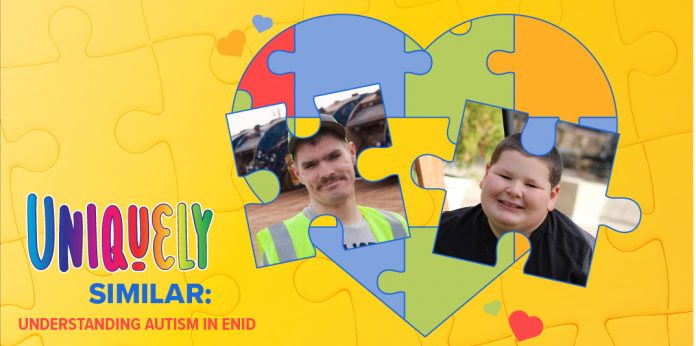If you have met one person with autism, you have met one person with autism. Short for autism spectrum disorder (ASD) which is a developmental disorder that affects how a person communicates and behaves. Autism can be diagnosed at any age but is referred to as a developmental disorder since symptoms generally surface during the first two years of a person’s life.
Due to the wide range of possible symptoms, autism is specified as a spectrum. The severity of symptoms varies significantly therefore individuals with ASD can have very different experiences.
While experiences and levels of severity differ, individuals often share similar characteristics including behavioral difficulties, issues with social interaction and sensory sensitivities. Sensory sensitivity often results in unusually strong reactions to sight, sound, touch, smell or hearing expressed in an unusual way. Reactions can have either a positive or negative effect depending on the situation.
April has been recognized by the Autism Society as Autism Awareness Month since the 1970s. The goal of a month dedicated to autism awareness is to highlight the growing need for concern and awareness about autism. In addition to awareness, understanding is also very important. Offering understanding can help lend support to not only individuals with autism, but also to parents that are navigating life alongside their sons and daughters offering as much guidance and support they can along the way.
Tripp Henry Chastain

Bananas, they could not make it past the bananas. Carrie Chastain will never forget what was supposed to be a quick visit to the store to pick up a few things, however, she and her son barely made it past the entrance before the mission came to a complete halt in the produce section in front of the display of bananas. There was no bribing, motivating or begging young Tripp. He was fixated on the yellow fruit and nothing could get to him. Rather than scoop him up and cause a scene with the tantrum that was sure to ensue, Carrie made a quick call to her husband Chris who came within a few minutes to take over and take Tripp home so she could finish shopping. It took teamwork and flexibility to accomplish a quick run to the grocery store, something most people take for granted.
Carrie’s experience has given her a whole new perspective that can easily serve as a lesson to everyone. When she sees a parent struggling with a child that appears disruptive, she looks for opportunities to help with the situation even if it is just offering support. When she sees abandoned grocery carts, rather than judging the person for leaving abruptly she thinks to herself, I’ve been there.
Tripp Henry was the first child for Carrie and Chris. As he progressed through his first few years Carrie kept a calendar of “firsts.” He was right on target or early with all the gross motor milestones, he even took off walking at ten months. Carrie said he learned to walk in between the family’s three yellow labs so he had amazing balance. He smiled, he laughed, he was a good eater but two things were apparent: Toys did not interest him and he didn’t talk. Tripp was very interested in television and the iPad from an early age but he did not play with toys, no matter which ones they tried. He might pay attention to a new toy for a minute but never return to it. He was not interested in being read to. Later on, they would discover he had his way of reading books and he would spontaneously read from his favorites. Most of them would involve robots or astronauts. They would learn later that Tripp could read before he spoke. He was great at reading signs and took in everything around him. He just did not read them out loud.
Carrie recalled observing a little girl about Tripp’s age at eighteen months old singing a song and inside she thought to herself: her son had yet to even say Mom. At three and a half, he would say a few words and word remnants. He had sounds that meant certain things and used one phrase “right there” but would not say Mom or Dad. Tripp was four before Carrie would hear him call her mom. Over this period, they ruled out hearing issues and the doctor would offer reassurance there was no reason to worry and would often chalk it up to “being a boy.”
It wasn’t until they switched doctors and Tripp underwent further testing that he would have an actual diagnosis for what he was experiencing. The new doctor diagnosed him with Pervasive Development Disorder, Not Otherwise Specified (PPD-NOS). PDD-NOS is on the spectrum but made up of individuals that have a lot of signs of autism but will look you in the eye and laugh and smile. While Tripp would interact, he still had a speech delay, sensory aversions and social issues. He was a happy child and did not have some of the more evident stimming behaviors (a repetitive or unusual movement or noise some autistic children use to cope with overwhelming situations) such as hand clapping or making loud noises. Tripp’s go-to stim is the wringing of his hands and fingers in front of his face.
A baby sister, Quinn, was added to the family when Tripp was two. As she grew, Carrie noticed that she was very sensitive to certain things as well. She is a picky eater, is very sensitive to smells and the way things feel, especially clothes, however, she can recognize that she may not like something and quickly move on.
Carrie had a lot of support early on and recognizes the people in her life for helping her in “amazing” ways. Some of that support came from his first set of teachers. Tripp attended Learning Tree Pre School. It was there that his teachers noticed that he would be fine until it came time to switch rooms. Transitioning from room to room would be very difficult and he would become upset. They were supportive and looked for ways to ease the transition. They discovered if he had a transition object such as a book or an item from home, he would transition fine. It was at that time the idea of getting a service dog for Tripp developed and a fundraising campaign began.

The money was raised and Tripp would soon receive his very own dog to help him with day-to-day activities. Every day Carrie and Chris would talk to Tripp daily telling him he was getting a dog but he would not provide much of a response. Carrie said that sometimes it was hard to remember to just talk to him like he understands when you don’t get a response. Sometimes it felt like she was talking just to hear herself talk but he could hear and he could understand. They continued to tell Tripp about Jake and ask if he was excited. He would not offer one word of acknowledgment that he understood what they were saying. Naturally, they were worried that he wouldn’t care about Jake. He liked the family dogs but he did not pay much attention to them. So, when Jake arrived and they first introduced the Golden Retriever to Tripp a wave of relief went through Carrie’s heart as Tripp grabbed the leash and “was so happy.”
Jake’s trainer stayed with the family for four days and then they were on their own. Carrie compared the experience to bringing a newborn home from the hospital after a c-section and being coached by the nurses on taking care of yourself and the baby and then all of a sudden you are just instinctively supposed to know what to do on your own. But all was well, in fact, it was amazing. Tripp’s anxiety level was cut in half. He knew Jake was his dog. He walked so proudly with him down the sidewalk and the aisles of the “supermarket” as Tripp calls it because that is what the Bubble Guppies call it. Yes, the supermarket! Right. Past. The. Bananas. Carrie had tears in her eyes. Jake could “unstick” Tripp. Something that no iPad, mommy’s phone, or anything else could do. Tripp’s vocabulary increased, something they were skeptical of despite the claims that autism service dogs could increase vocabulary, but it was happening.
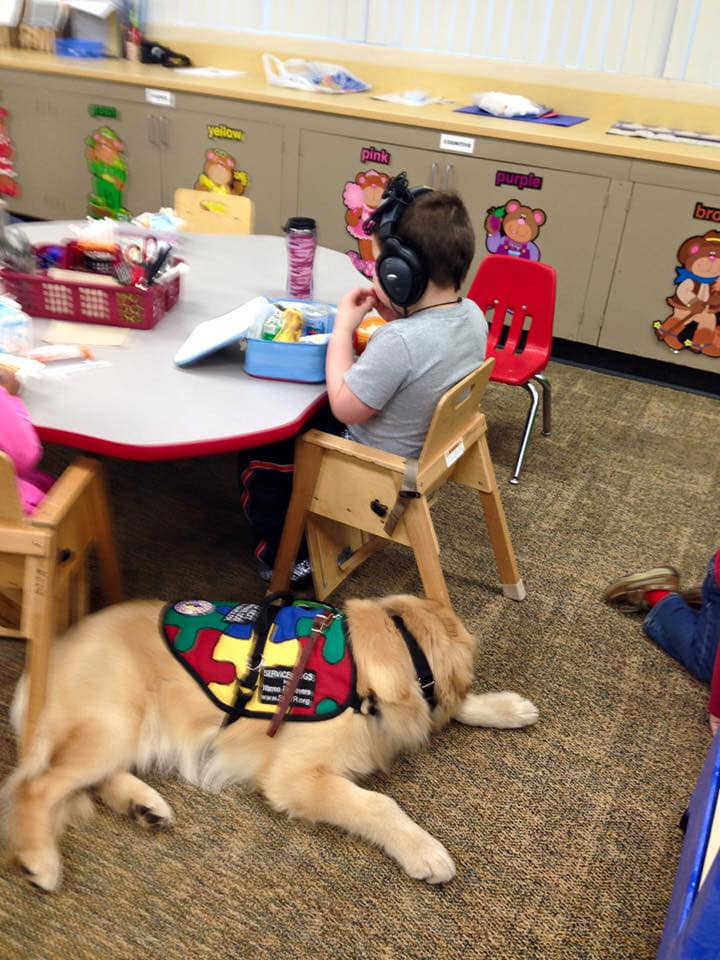
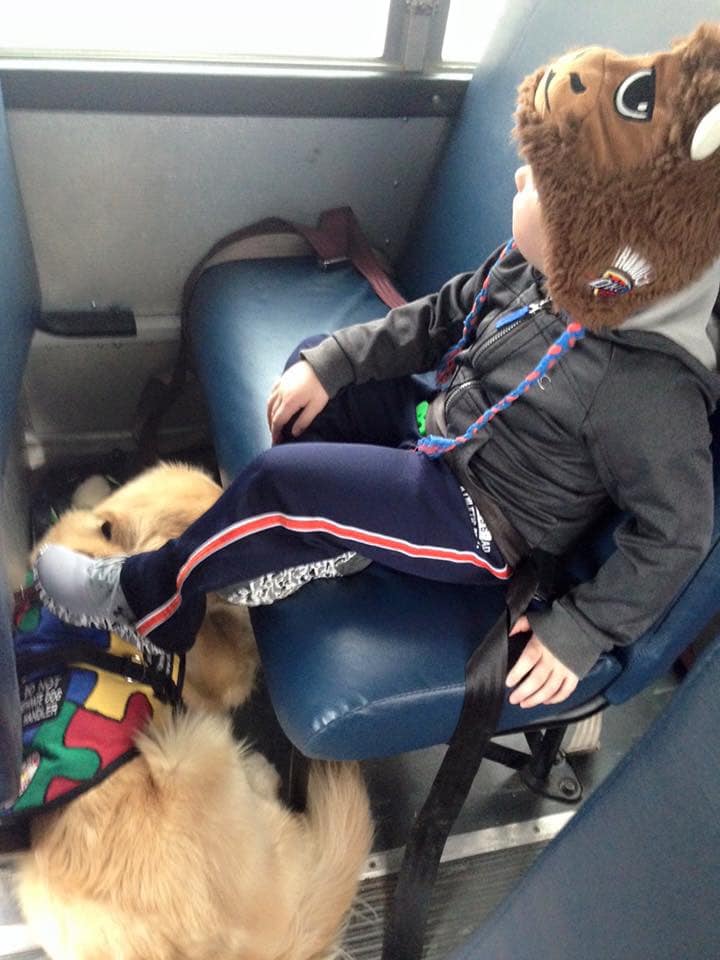
They went everywhere over the next four days, Bennie’s Barn, school, Chili’s restaurant, two different grocery stores, occupational therapy, sister Quinn’s preschool and finally a bouncy house birthday party. Places that they said could look like a child abduction would be taking place as they took a screaming flailing kid out the front door. While the meltdown tendencies still existed, they were able to distract him with Jake.
One of the most exciting days for Carrie was when she realized that Tripp no longer only thought about himself. They were at Urgent Care and had a long wait. Deciding he had had enough, Tripp picked up the leash and said, “come on, Jake!” It was at that point she joked, she hoped they did not regret creating the power couple.
Jake took his job very seriously; Tripp was his boy, and he always knew where he was. Jake assisted with keeping Tripp from going in the street, a very important trait for autism service dogs. He was able to learn how to find his boy during training exercises for a wandering situation. Jake could find Tripp and alert to where he was, not letting him out of his sight. Jake would worry when Tripp was in the yard by himself although Carrie would be close enough to snap a picture for Facebook along with a funny caption such as don’t these people realize this boy is outside by himself.
The lovable service dog was not all work and no play. He got along with the other dogs in the house and often played tug of war over his favorite toys. It wasn’t unusual for Jake to take two bones outside and try to bury one to hide it from his buddy. When Carrie tried to shame him when snapping his picture, he simply smiled and posed.
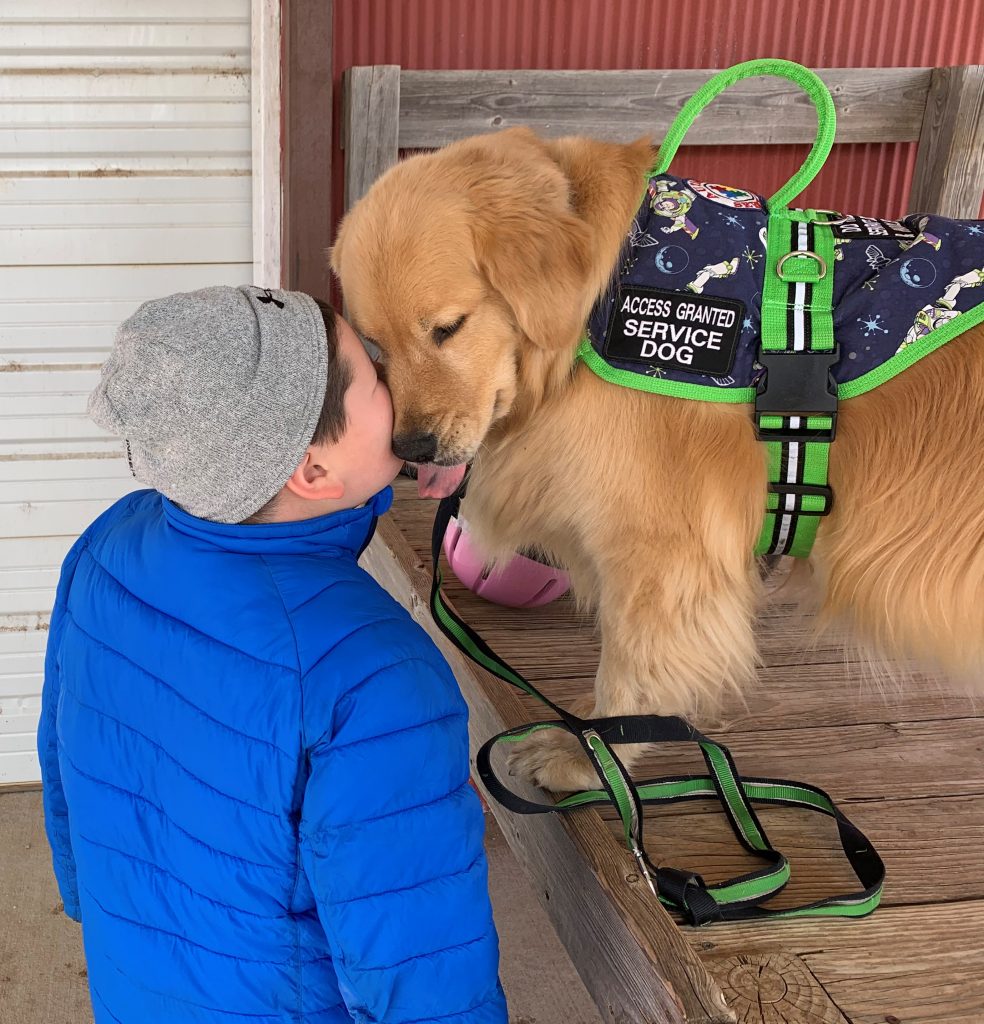
Jake was good for the whole family; he was close to Quinn as well and they all loved him. He was good for Tripp. He gave him the confidence he needed to learn to communicate and take part in things he might not have otherwise experienced. He helped with school to the point that Tripp was ready for a mainstream classroom. At that point, the activity and number of kids would make it hard for Jake to relax during the day as it was not always possible to keep close watch over his boy. It was then they decided to keep Jake at home during the school day. Tripp continued to do well.
By January of this year, Jake had been in Tripp’s life longer than he had not. He came to live with the family just after Tripp turned five and he was now eleven. After six years together, Jake was still working hard for his boy and the family could not imagine life without him.
February 19, Jake and Tripp’s story came to a devastatingly abrupt halt. It was only a few short nights before that Jake stopped eating. Something was wrong. They took Jake to Enid Pet Hospital and to Blue Pearl Specialty Hospital in Oklahoma City. He went down so rapidly; Carrie could not wrap her head around it. Just a few days before he was running around the front yard chasing his canine friend, he loved to hide bones from and then suddenly, he was gone. It was cancer and although the veterinarians did everything in their power, his liver failed. Jake’s work on earth was done and losing the irreplaceable pup left the family devastated. They delivered the news to Tripp and while he seemed to understand, he would ask when they were going to pick him up and bring him home. A mold of his paw print, a photo book dedicated to his memory and his collar resting upon the personalized box that holds his ashes sits on the shelf honoring the dog who “changed it all for Tripp.”
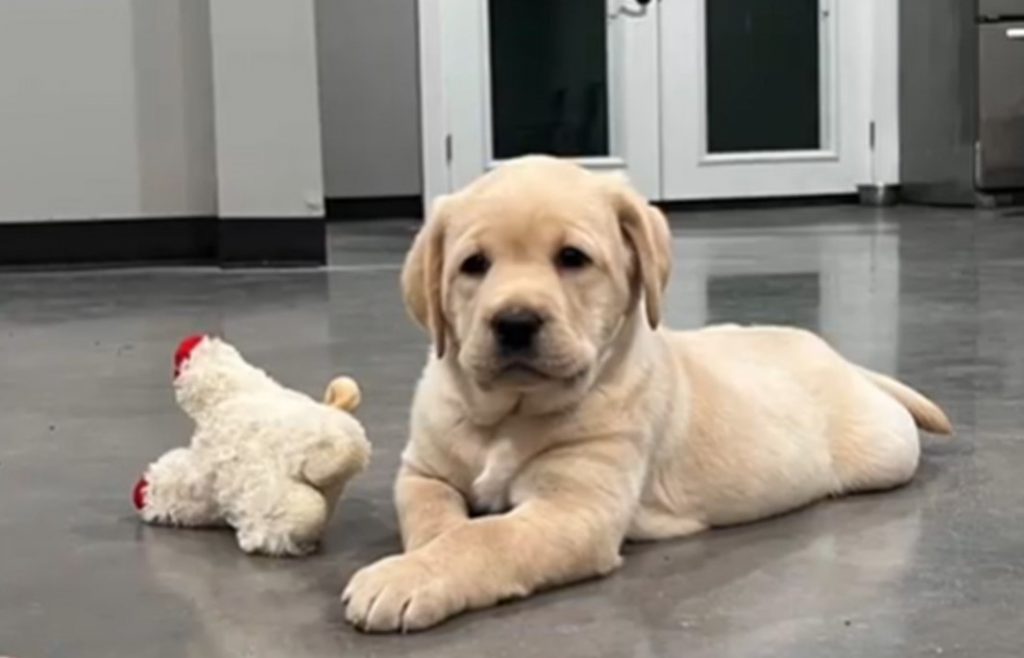
While any dog that follows would have big paws to fill, the family decided to start training Jake 2.0. The initial thought was that would happen sometime later this summer, however, as Carrie put it, “Jesus and Jake are up there opening doors, closing doors and making crooked paths straight! They must have thought Tripp needed a wingman faster than we expected!” Goose is the name of Tripp’s new “wingman” and he will start his journey to Oklahoma from Maryland on March 23. The family is taking on training efforts themselves this time under the direction of one of Jake’s trainers.
Carrie has kept a blog and Facebook page featuring not only thoughts and stories but also many pictures tracking their journey. Retrieving Tripp is an honest, heartwarming, realistic archive that is a great resource for anyone interested in learning more about life with Tripp.
Zacary Doñald Sharp

Twenty-three-year-old Zacary Donald Sharp (Zac) was born with autism and has spent his life in the community of Lahoma. Having experience raising Zac’s sister, Brittany, who was seven years older, Theresa noticed some significant differences with Zac when he was very young. She would later learn that his actions had a lot to do with sensory issues. For example, Zac would move from a carpeted area of floor to concrete to flail himself back and land on his head. Additionally, he would hit his head on walls and cabinets. She brought up concerns with the explaining they were having trouble and what he was doing. The doctor advised they might be holding him too much. When the behavior increased and Theresa expressed concern, the response was he was a boy, boys are headbangers, no worries. She noticed he was not quite walking yet and was concerned he was not developing.
It was when Zac was 18 months old and a trip in the car down a gravel road prompted a level of misery for Zac above and beyond the usual. Zac did not like the car. He did not like being in a car seat. He would cry and scream and throw a fit. They would find out later through research that the sun, heat and the noise from the road added to sensory overload. This particular day, the sound of the gravel made the experience much worse than usual. Theresa pulled the car to the side of the road after looking in the rearview mirror to find he was covered in blood. She checked to make sure he was not severely injured. He was sweaty and his nose was running from crying and had blood on his head. She made sure he was safe, returned to the driver’s seat and drove directly to the doctor’s office even though it was lunchtime, and the doors were locked. As they waited in the hall for the office to open Zac continued to be upset and was screaming. One of the staff members came to check on the situation and asked if Theresa was okay. She of course was not and said that the doctor needed to see him in the current situation to understand what she had been dealing with. It was important for the doctor to see Zac and what he was going through. The staff was very kind and helped watch Zac while Theresa got herself cleaned up. The doctor examined him and gave them a referral.
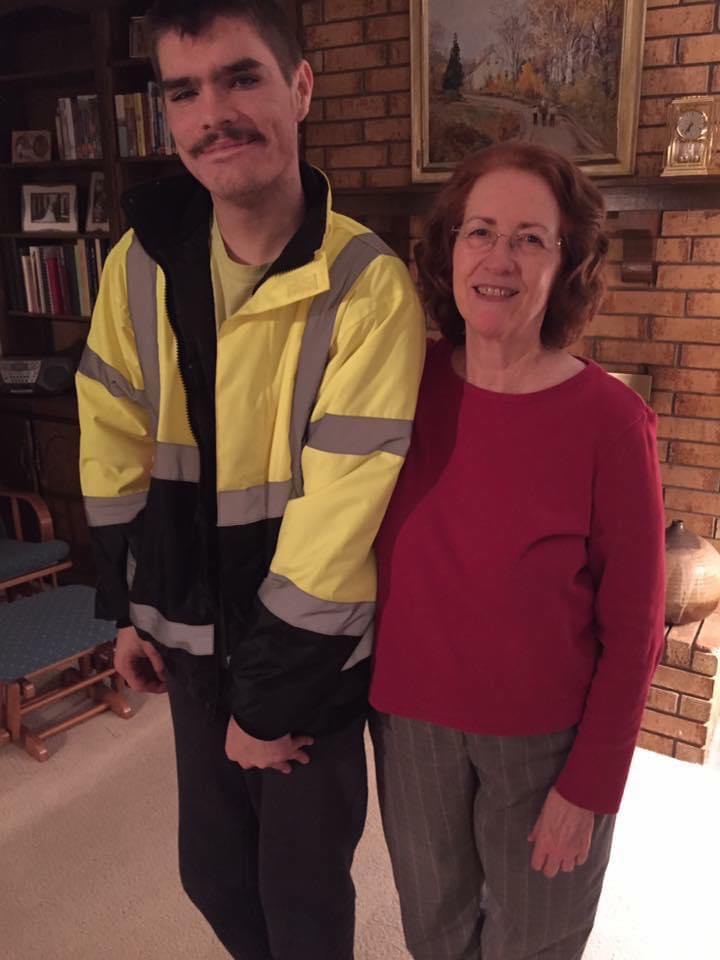

With the referral, they were able to obtain services through Sooner Start. One of the first things they did was prescribe a helmet to help protect his head during outbursts. With the help of Sooner Start at the age of 15 – 19 months, Zac was able to undergo testing to identify issues that needed attention. Sensory was a major point of concern along with speech as he had not started talking yet. He was able to get assistance through occupational therapy, speech therapy and physical therapy. Zac was able to learn some simple sign language to communicate. The overall evaluation was that it was the lack of communication skills that were causing frustration that resulted in acting out. Zac stayed with Sooner Start until he aged out at three years old. It was then, they were able to transition to Head Start. Through in-home visits, they were able to assist with communication through sign language, creating binders and a palm pilot-like device Zac was able to use to communicate.
Zac started attending speech therapy early through the school system in addition to private speech therapy with Cathy Chambers at Hedges Speech and Hearing at the age of three. To this day both Theresa and Zac think the world of Cathy and are very thankful for her role in helping Zac.
As time progressed so did the equipment he used to communicate and interact with. Zac learned to use a Dynavox, a speech-generating device that could read stories and allowed his parents to learn what he enjoyed learning about.
A few of Zac’s favorite things in the world still today are vacuum cleaners and trash cans and trash trucks. Through the years, Zac has learned a lot about vacuum cleaners. He enjoys all types of upright vacuum cleaners and shared that his favorite right now are Hoovers. He has become well known in the area for cleaning and fixing vacuum cleaners. He also likes to clean rugs. The situation is good for people that need rugs clean and good for Zac who always has a vacuum cleaner to try out. He collects vacuum cleaner parts to use to fix and rebuild the machines that fascinate him. One of his most memorable experiences was a trip with his sister Brittany to visit the Vacuum Cleaner Museum in Missouri. The trip proved a little nerve-wracking for Theresa, but she was glad the two had the adventure together and made memories. For Zac fixing vacuum cleaners is not about making money as he truly enjoys what he does and likes helping people. In lieu of money though he might ask for help or for people to be featured with him in one of his Tik Tok videos. He is becoming quite popular on the platform and enjoys making videos.
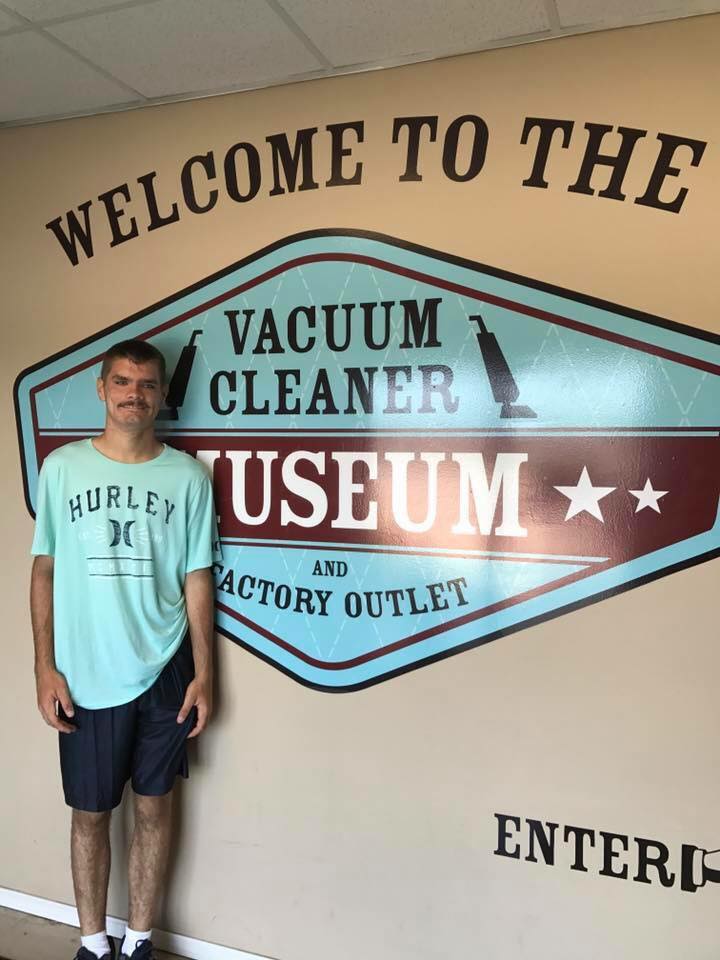
Most of his neighbors support Zac’s love of helping others and his intrigue with trash trucks allowing him to pull their trash carts to the curb to be emptied and then put them back in place once the trash truck has been by. He is well known by the usual crew and is quick with a wave as they pass by. With the help of a friend and his drone, they recently made a video featuring Zac on trash day. The video shows his weekly routine of pulling the carts to the curb and returning them and gives viewers a glimpse of the excitement trash day brings. His intrigue with trash trucks and trash cans has turned into quite the knowledge base of different types of trash cans and carts. While most people might not think much past opening the lid and putting trash inside, Zac knows what types of trash carts exist and which ones are better than others.
Zac can also be seen around the community pulling a cart with his bike, his main mode of transportation. The cart is very handy for picking up treasures he finds and is good for an occasional ride for one of his smaller friends. Zac is very popular with the younger crowd. They all enjoy riding bikes together. His generous spirit has led him to find ways to fix bikes or have bikes or bike parts donated for his friends that otherwise do not have a bike to ride. According to Theresa, their “bike gang” is quite a sight to see.
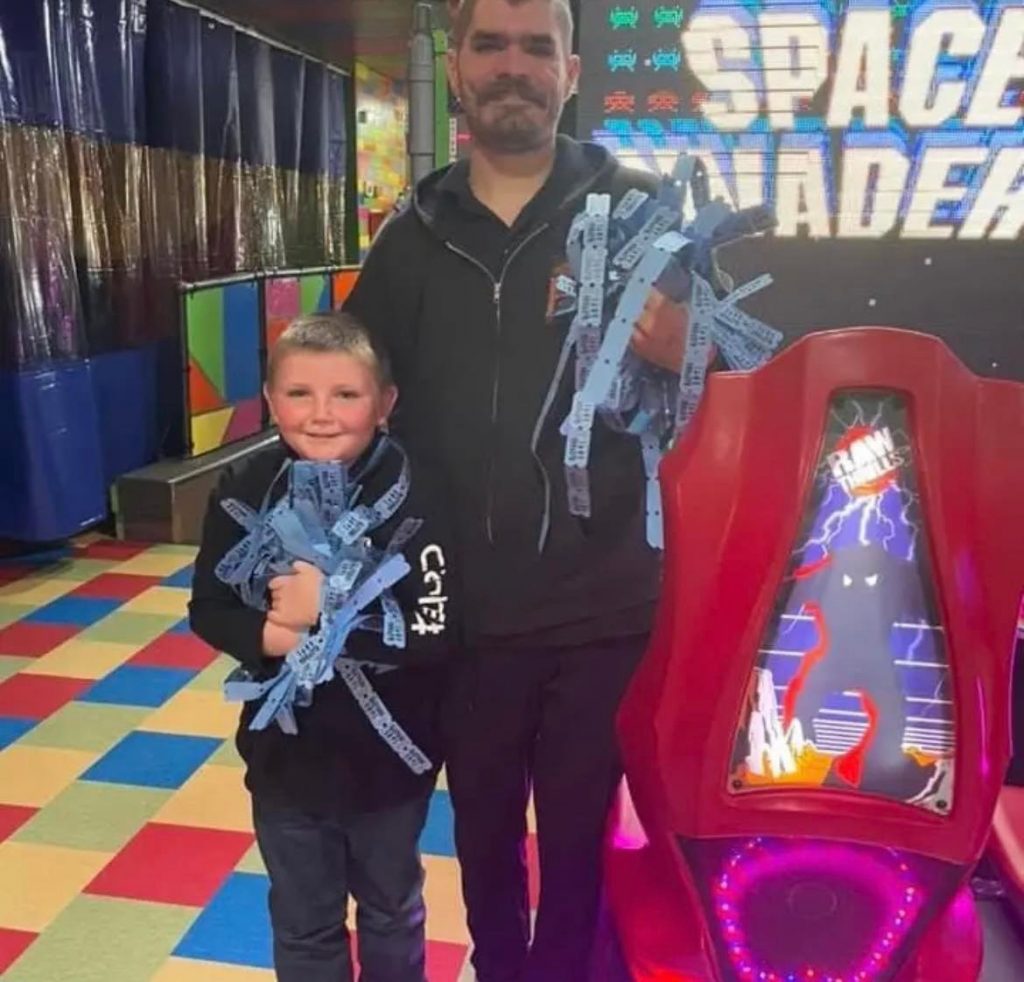
Zac enjoys hanging out with his friends, including Peanut (nicknamed by his mom) and Cash. He has too many friends to try and mention them all. Zac also enjoys listening to music. Right now, his favorite artist is Tim McGraw and his favorite song is Together by Gary Clark. Zac enjoys making Tik Tok videos for entertainment and enjoys keeping up with his favorite “TikToker”, Ryder from rydertheprinceoftiktok09. He loves his “sweet girl” Jessie. A two-year-old Aussiedoodle that gets jealous of her “manster” when he gets home and has doggy smell on him.
He is overall a joy to be around. Zac is kind and is a hard worker. To his mother’s surprise a few years ago, Zac came home from the local Jiffy Trip and announced he had a job. She knew he visited the store often but was surprised to find out that yes, he had negotiated a job for himself. He stocks shelves and helps with tasks around the store. He is a good worker. His consistency and hard work earned him the honor of employee of the month last November. This was a very proud moment, especially for his mother who never gave up and has always worked to do her very best to make sure he had the support he needed.
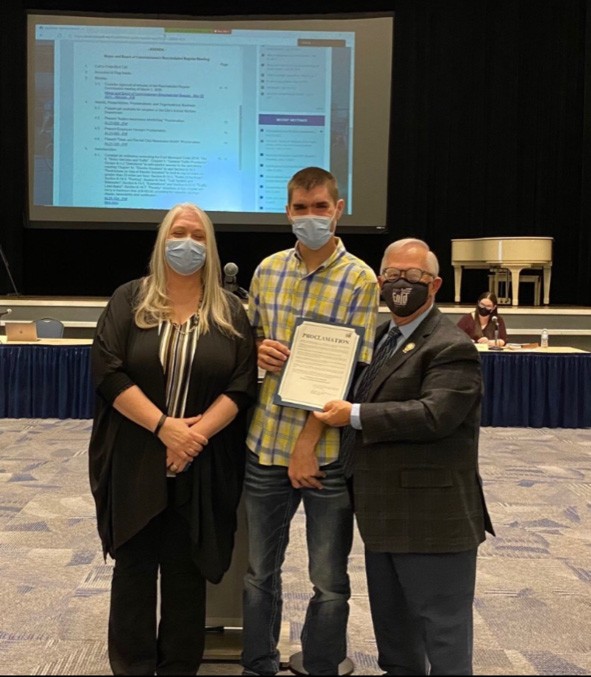
One thing that both Tripp and Zac have in common is they have both been honored by the City of Enid with Proclamations in honor of Autism Awareness Month/Day. The idea of Autism Awareness Month is not only to create awareness once a year but to expand beyond that to put a spotlight on the hurdles that people with autism and those around them face every day. A little understanding can go a long way when it comes to supporting these individuals and their loved ones.




